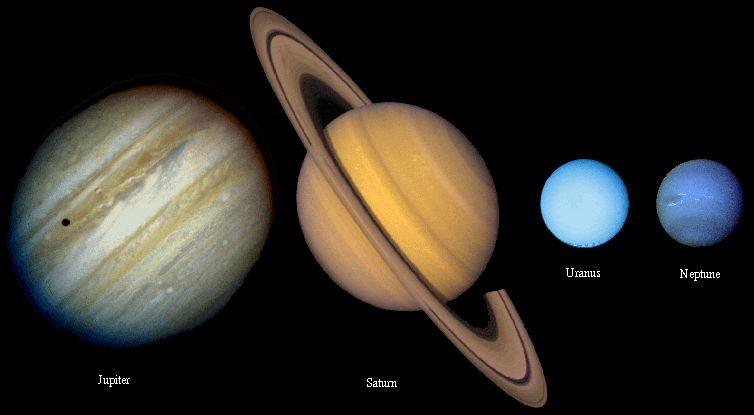
What’s the oldest stuff in your refrigerator (aside from that rubbery celery you bought but never ate)? Leftovers! The same is true in the solar system. The fragmentary leftovers of the formation of the sun and planets are some of the oldest objects in the solar system. For a long time, few scientists paid much attention to this debris or knew much about it. More recently, however, astronomers have come to realize that many significant clues to the origin and early evolution of the solar system are to be found not in the planets, but in the smaller bodies, the planetary moons and solar system debris. For the most part, the planets are very active places. Atmospheres have produced erosion, and internal geological activity has erased ancient surfaces. On the earth, weather, water, and tectonic motion have long since “recycled” the earth’s original surface.
So studying the planets reveals relatively little about the origins of the solar system. However, on moons and asteroids, atmospheres are sparse or nonexistent, and geological activity is minimal or absent. The result? Many of these bodies have changed little since the solar system was born. They are, in effect, cosmic leftovers.





 A snapshot freezes an instant in time. When we think about our solar system, we usually assume that it has always been much as it is now, and always will be. But what we know of the solar system (4,000 years of accumulated knowledge) is only a mere snapshot in comparison to its 4.6 billion–year age. It took humankind millennia to reach the conclusion that our planet is part of a solar system, one of many planets spinning on its axis orbiting the sun. These were centuries of wrestling with the earth-centered planetary system first of Aristotle, then of Ptolemy, trying to make the expected planetary orbits coincide with actual observation. This knowledge arose in some sense as a side product of the real initial goals: to be able to predict the motion of the planets and stars for the purpose of creating calendars and (in some cases) as a means of fortune-telling. However, even the earliest astronomers (of whom we know) wanted to do more than predict the planets’ motions. They wanted to know what was “really” going on. When Copernicus, Galileo, Tycho Brahe, and Kepler finally succeeded in doing this quite well in the sixteenth and seventeenth centuries, it was a momentous time for astronomy and human understanding.
A snapshot freezes an instant in time. When we think about our solar system, we usually assume that it has always been much as it is now, and always will be. But what we know of the solar system (4,000 years of accumulated knowledge) is only a mere snapshot in comparison to its 4.6 billion–year age. It took humankind millennia to reach the conclusion that our planet is part of a solar system, one of many planets spinning on its axis orbiting the sun. These were centuries of wrestling with the earth-centered planetary system first of Aristotle, then of Ptolemy, trying to make the expected planetary orbits coincide with actual observation. This knowledge arose in some sense as a side product of the real initial goals: to be able to predict the motion of the planets and stars for the purpose of creating calendars and (in some cases) as a means of fortune-telling. However, even the earliest astronomers (of whom we know) wanted to do more than predict the planets’ motions. They wanted to know what was “really” going on. When Copernicus, Galileo, Tycho Brahe, and Kepler finally succeeded in doing this quite well in the sixteenth and seventeenth centuries, it was a momentous time for astronomy and human understanding.
